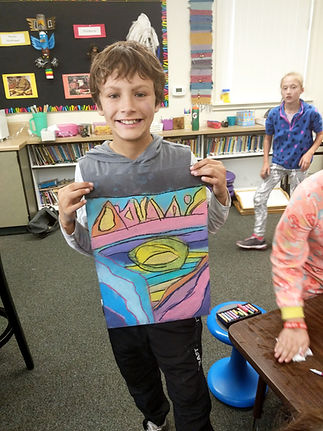7 Reason Why Art in Elementary Schools is Essential
-
Creativity and self-expression: Art provides a platform for students to explore their creativity and express themselves. It allows children to communicate their thoughts, emotions, and ideas in a visual and tangible form. Artistic activities encourage students to think critically, make decisions, and solve problems, fostering their imagination and individuality.
-
Cognitive development: Art education enhances cognitive skills such as critical thinking, problem-solving, and decision-making. When engaging in artistic activities, students observe, analyze, interpret, and make connections between various elements. This process strengthens their cognitive abilities and helps develop skills necessary for success in other academic subjects.
-
Fine motor skills: Art involves activities that require fine motor skills, such as drawing, painting, sculpting, cutting, and pasting. These activities help children refine their hand-eye coordination, dexterity, and control over their small muscles. Improving fine motor skills through art can positively impact other areas of learning, such as writing and manipulating objects.
-
Emotional development: Art allows students to explore and express their emotions, helping them develop emotional intelligence and self-awareness. It provides an outlet for children to cope with and understand their feelings, building resilience and empathy. Through art, students can communicate their experiences, thoughts, and perspectives, promoting emotional well-being.
-
Cultural and historical appreciation: Art education exposes students to a variety of artistic styles, traditions, and historical periods. It broadens their understanding and appreciation of different cultures and fosters an inclusive worldview. By studying artworks from various time periods and regions, children develop a deeper understanding of history, society, and the diversity of human expression.
-
Integration with other subjects: Art can be integrated with other subjects, such as science, math, language arts, and social studies. Through interdisciplinary projects, students can explore connections between different areas of knowledge, enhancing their comprehension and retention of information. Art can serve as a visual representation of abstract concepts, making learning more engaging and memorable.
-
Personal growth and self-esteem: Engaging in art activities allows students to set goals, take risks, and overcome challenges. As they create and improve their artwork, children experience a sense of accomplishment and pride, boosting their self-esteem. Art also encourages a growth mindset, where mistakes are seen as opportunities for learning and improvement, fostering resilience and perseverance.




